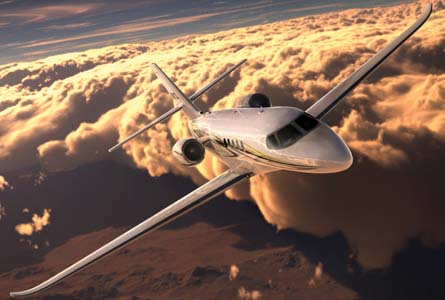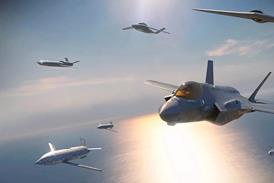Cessna has launched its second new Citation business jet in as many weeks, this time closing the gap in its range between the super-light Citation XLS+ and midsize Citation Sovereign.
Set for certification in 2015, the $14.9 million Citation Latitude is a nine passenger twinjet that will offer more range, speed and cabin space than the $12.6 million XLS+, but at a price much lower than the $17.5 million Sovereign.
Shoring up the lower end of the market, on 26 September the Kansas, US-based airframe giant announced the Citation M2, a retooled upgrade of the discontinued CJ1+, retailing at a lower price.
 |
|---|
© Cessna The Latitude shares a number of features with other Cessna all-metal jets, including a cruciform tail |
The $4.2 million M2 is meant to be bridge the gap between the Mustang entry-level jet and the CJ2+, the next in the Citation line.
The M2 type is also meant to help Cessna better compete with Brazilian airframer Embraer's $3.8 million Phenom 100 entry-level jet.
Much about the Latitude is in common with other Cessna all-metal business jets, including a cruciform tail, conventional mechanical flight controls and a Garmin-integrated flightdeck.
Michael Pierce, Cessna's director of product marketing, said the Latitude will feature Garmin G5000 avionics in a Cessna Intrinzic flightdeck - similar to that Cessna is installing in the updated Citation Ten, which is targeted for entry into service in the third quarter of 2013, along with the M2. The cockpit will feature three displays with four touch screen controllers.
As with the XLS+ and Sovereign, the Latitude will be powered by engine manufacturer Pratt & Whitney Canada, in this case with two PW306D turbofan engines, featuring 3,000h inspection and 6,000h overhaul intervals.
Top speed is expected to be approximately 442kt (819km/h) at 35,000ft (10,668m), only slightly faster than the XLS+, although the type's maximum range of 3,704km (2,000nm) will be nearly 278km further than the XLS+.
Similarly, full fuel payload is expected to be up by 68kg (150lb) from the XLS+, to 455kg. Like the XLS+, the Latitude's maximum altitude will be 45,000ft.
The new type will also be equipped with a Honeywell auxiliary power unit.
The Latitude's tapered metal wing has a 16.3 degree sweep on the leading edge, like the Sovereign, although the circular fuselage - according to Pierce - is a "clean sheet" design with a flat floor, a 6m (21ft) length and "stand up" aisle height of 2m.
The aircraft will be certified for two-pilot operations and carry as many as nine passengers, with at least 100ft3 (3m3) of unpressurised baggage space in the tail cone.
Pierce added that the baggage area will have fire detection and suppression equipment built in.
Cessna expects to fly the first prototype in 2014, which will then take part in a US Federal Aviation Administration Part 25 certification programme, along with the first two production aircraft. Certification and entry into service are expected in 2015.
From a visual aspect, the Latitude - or Model 680A - is most similar to the Sovereign - or Model 680 - but differs externally in the cockpit area, with four windscreens rather than six, as on the XLS+ and Sovereign.
The Latitude also has interesting caps to its wings. "The wings are curled up on the tips, but not winglets," Pierce said.
"We haven't been to the wind tunnel yet, but we're pretty sure this is what it will look like."
Source: Flight International























